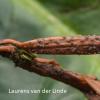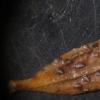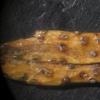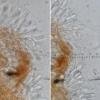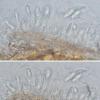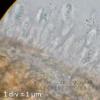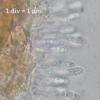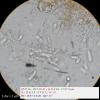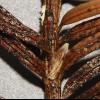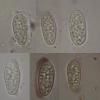
14-11-2025 16:26
 Marian Jagers
Marian Jagers
Hello everyone, On dead wood of Cytisus scoparius

14-11-2025 18:31
 Lothar Krieglsteiner
Lothar Krieglsteiner
Hello,can somebody provide me with a file of:Rothe

12-11-2025 09:25
 Viktorie Halasu
Viktorie Halasu
Hello, I need help with a pale terrestric Pseudom

11-11-2025 20:16
Bohan JiaHi, lastly I have found these tiny yellow decayin

09-11-2025 13:20
Hello.A tiny ascomycete, appearing as erupting gra

08-11-2025 00:29
 Francois Guay
Francois Guay
I found this species in Quebec, Canada, on herbace



Thank you very much for page 226, the pdf and your information.
Because of the size of the conidia and the absence of any brown coloured ones Laurens's collection could also be Cryptocline taxicola.
Best wishes, Riet

in a last year's collection of C. taxicola (from autochtonous population) I noticed spore sheaths, easily stainable with aqueous congo red. Usually they were wide and excentric, but sometimes they were tight and only a little bit loosened near the poles (bottom left photo). This might explain those "appendages" in the previous thread. I haven't noticed any sheath in Diplodia sp. on Fraxinus - are they lacking in D. taxi too?
Best wishes,
Viktorie

Mr. Schumacher: "......thank you for sharing your information.This is NOT a Diplodia-like. Only in a very young state of development the immature conidia can be hyaline and do have coarsely guttules. But the arrangement of the guttules is not the same as in Cryptocline. A good work name is Cryptocline taxicola ......."
